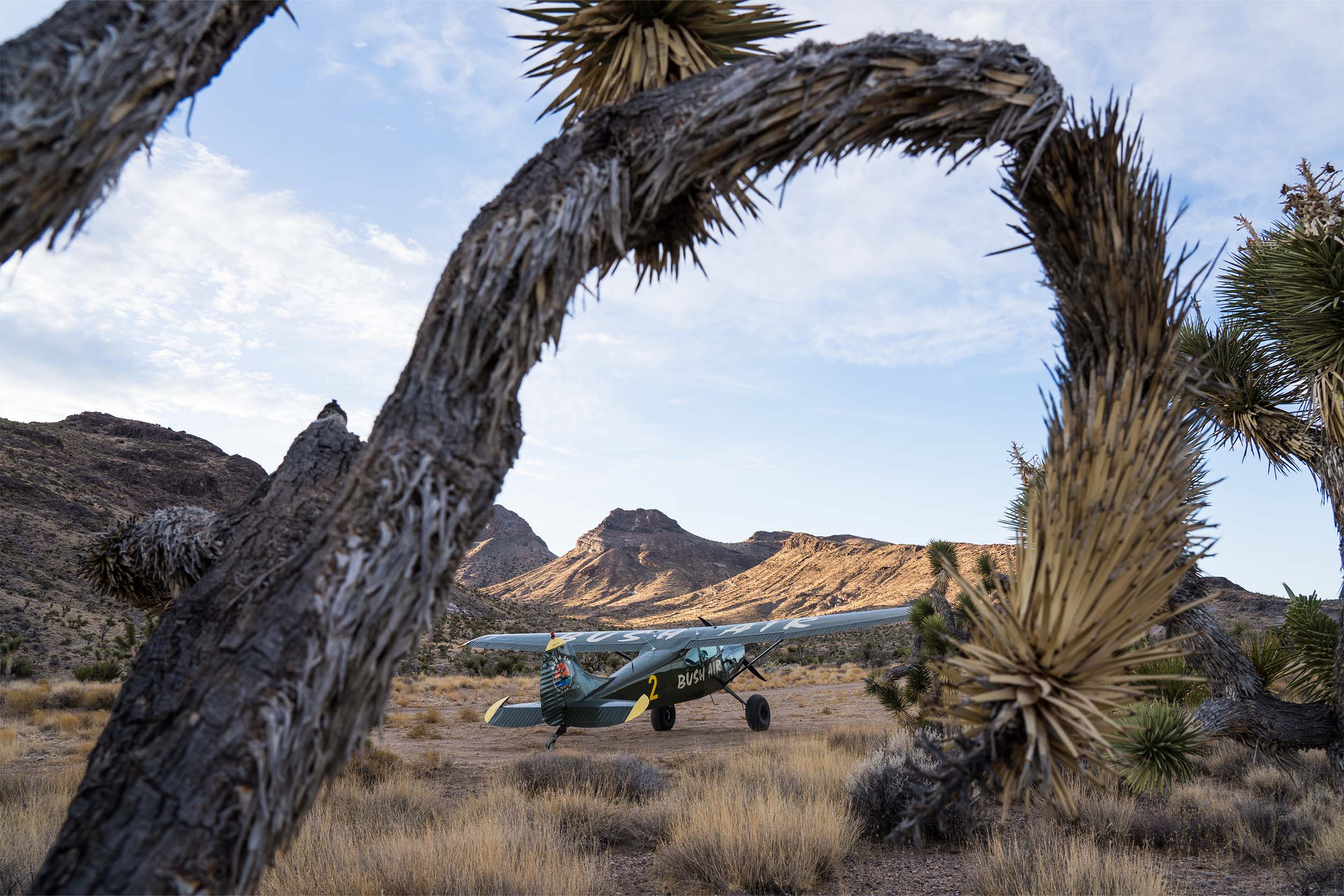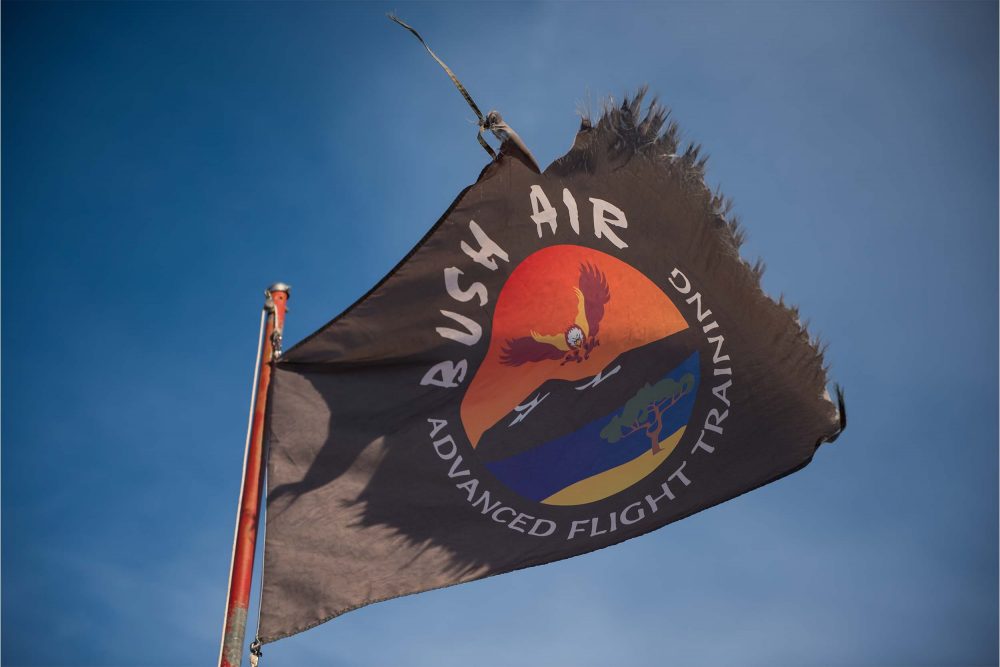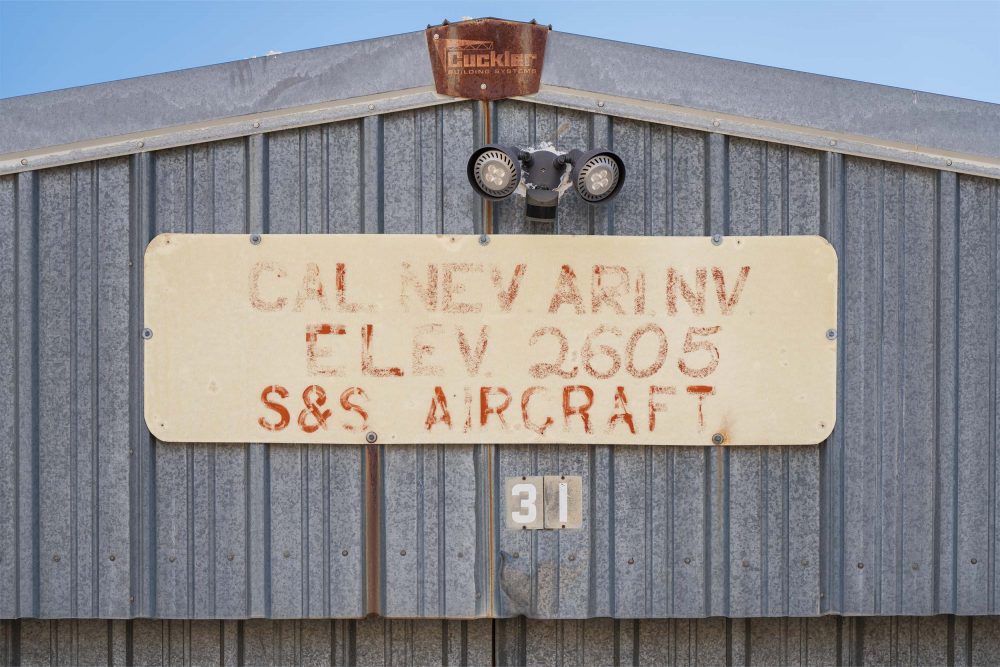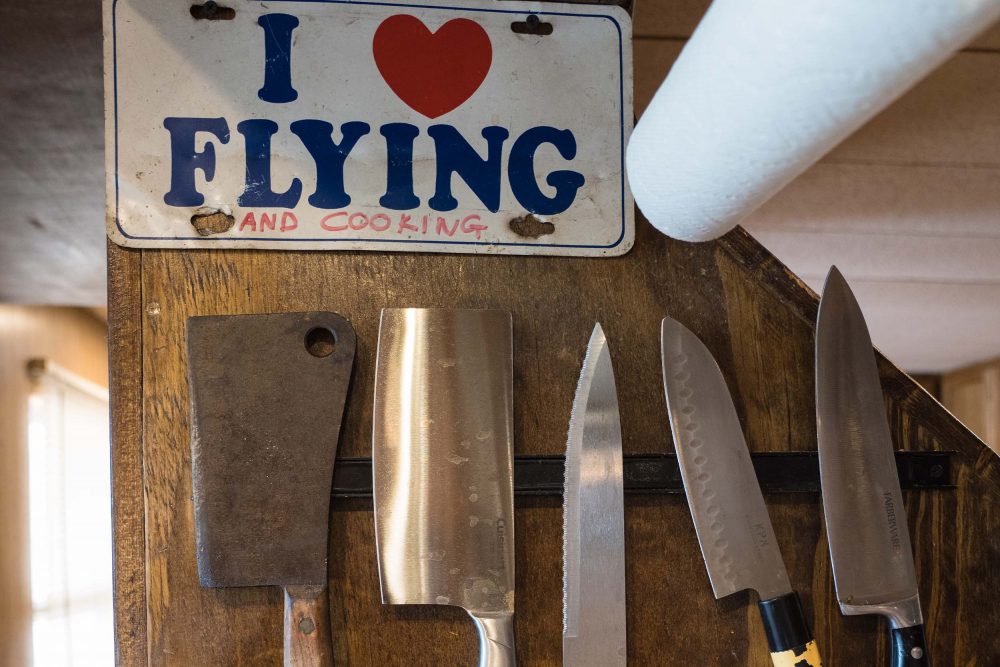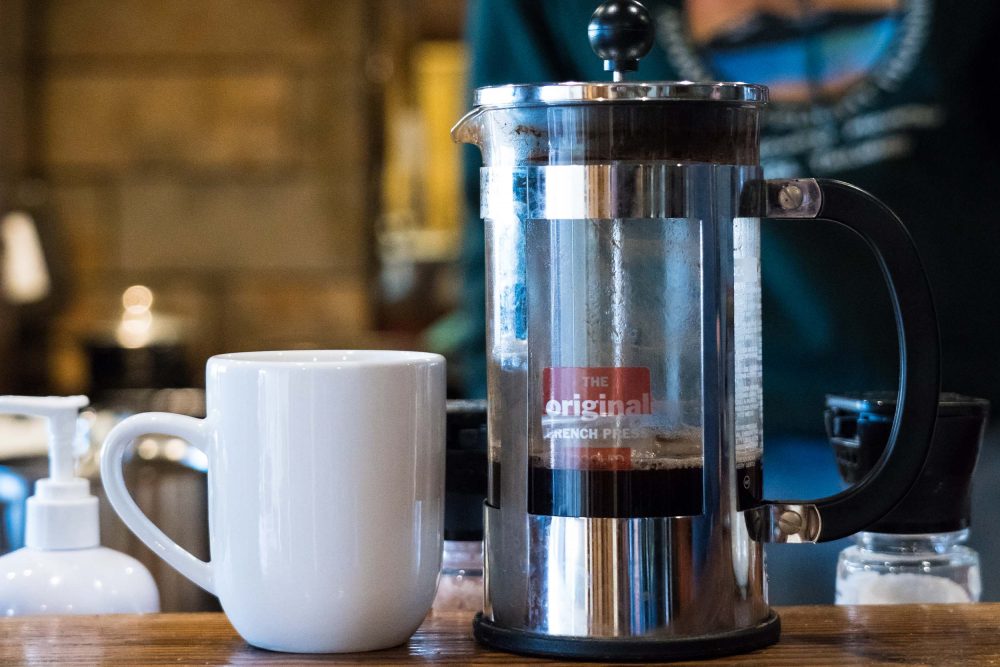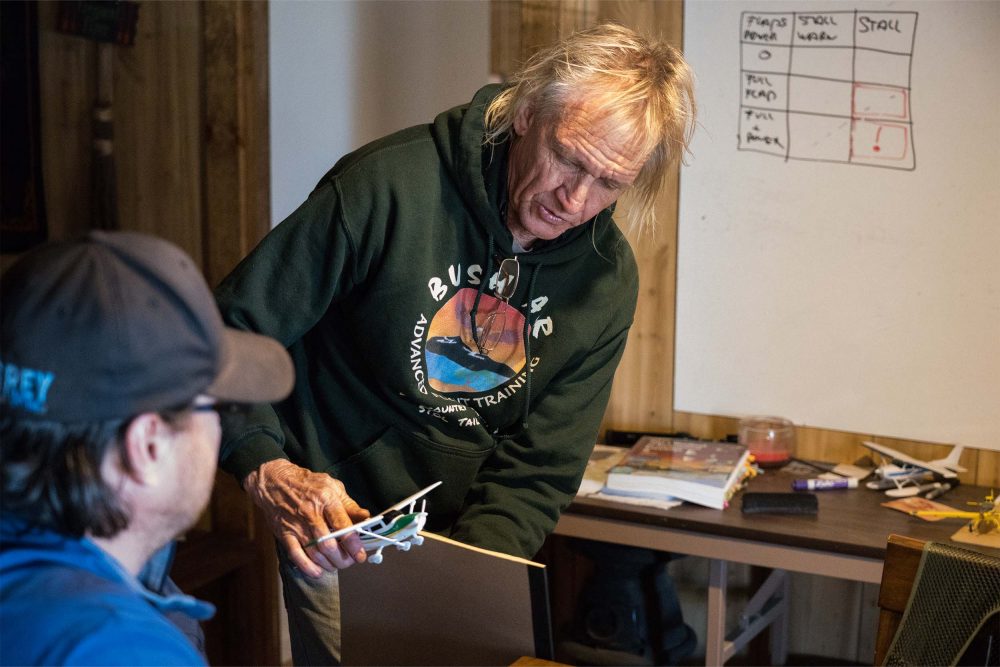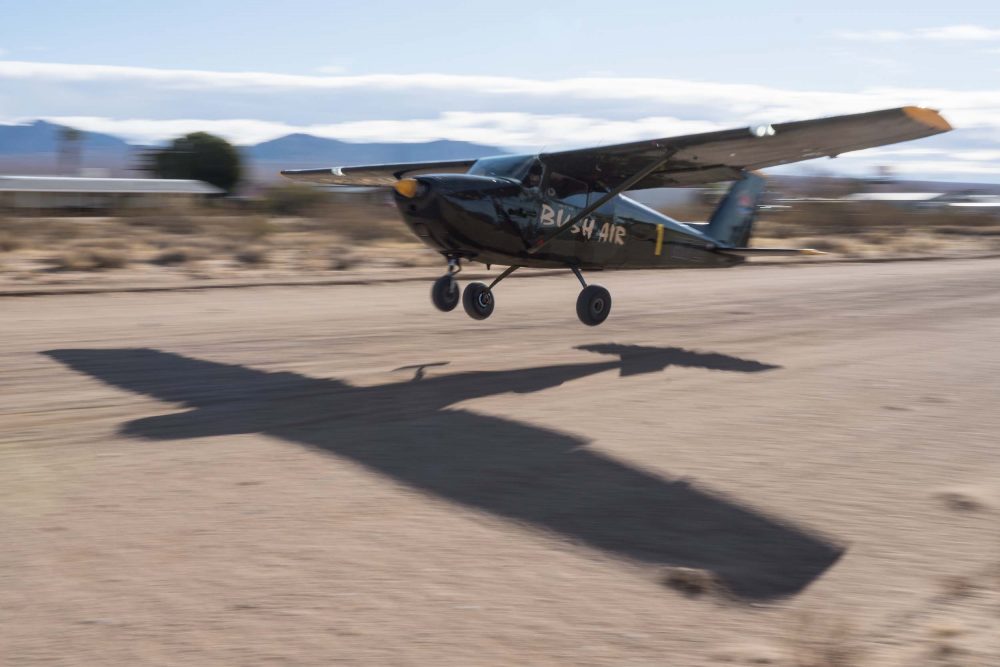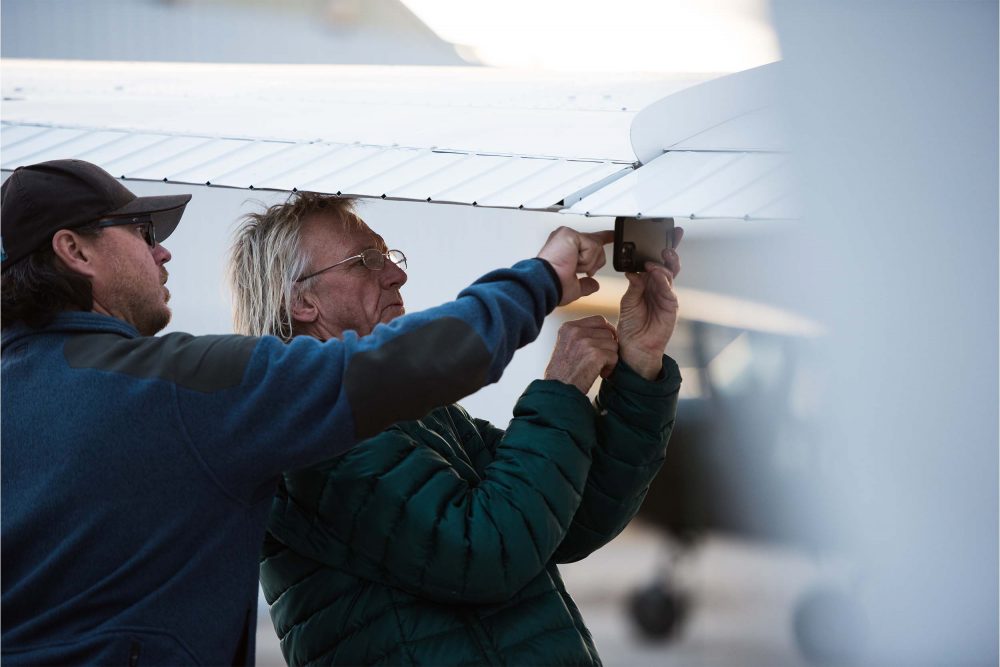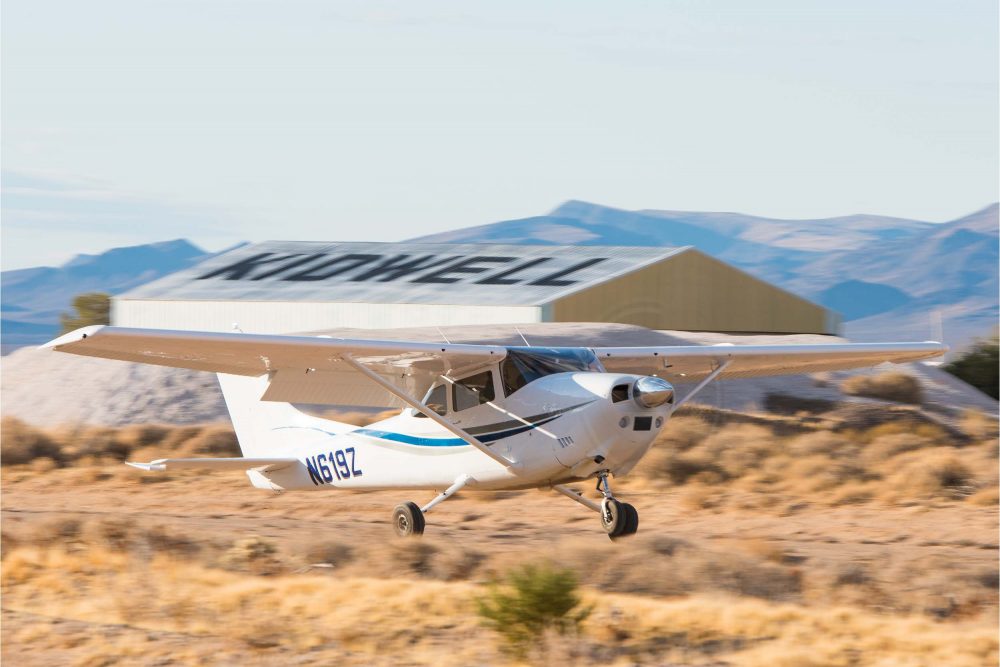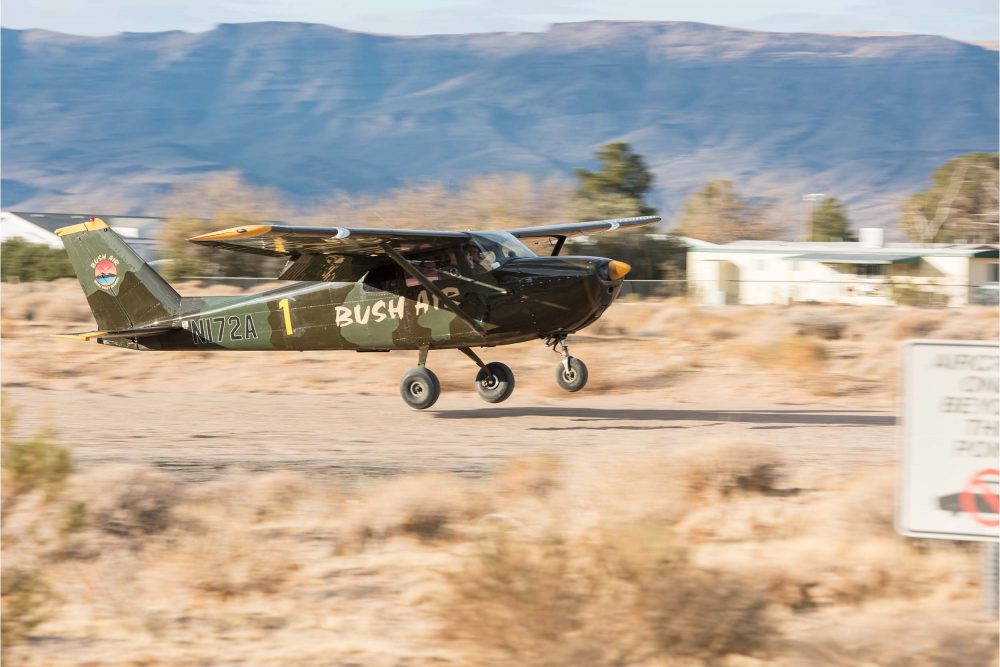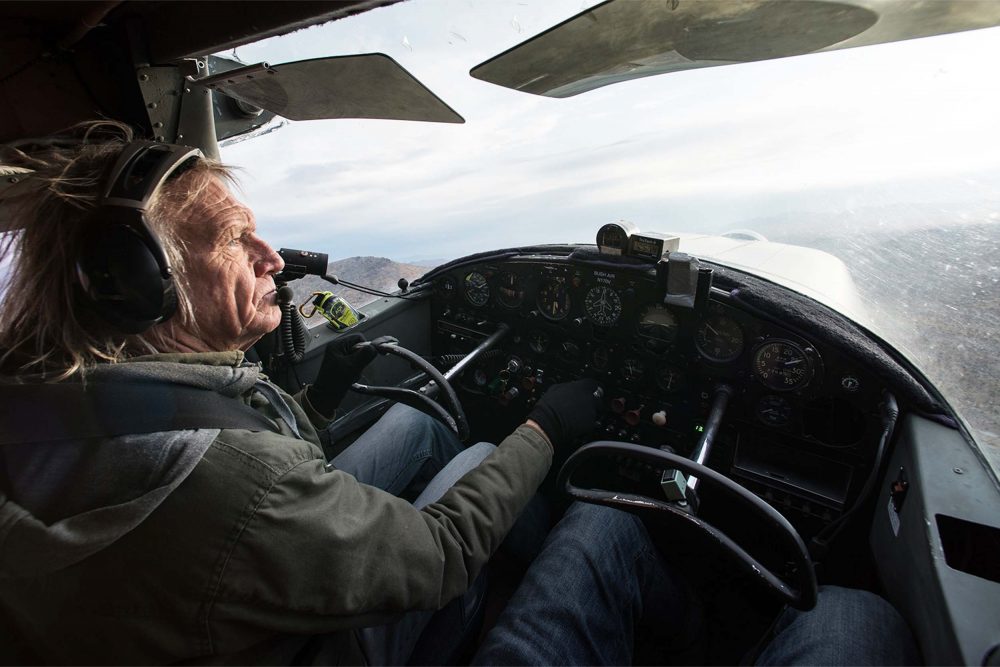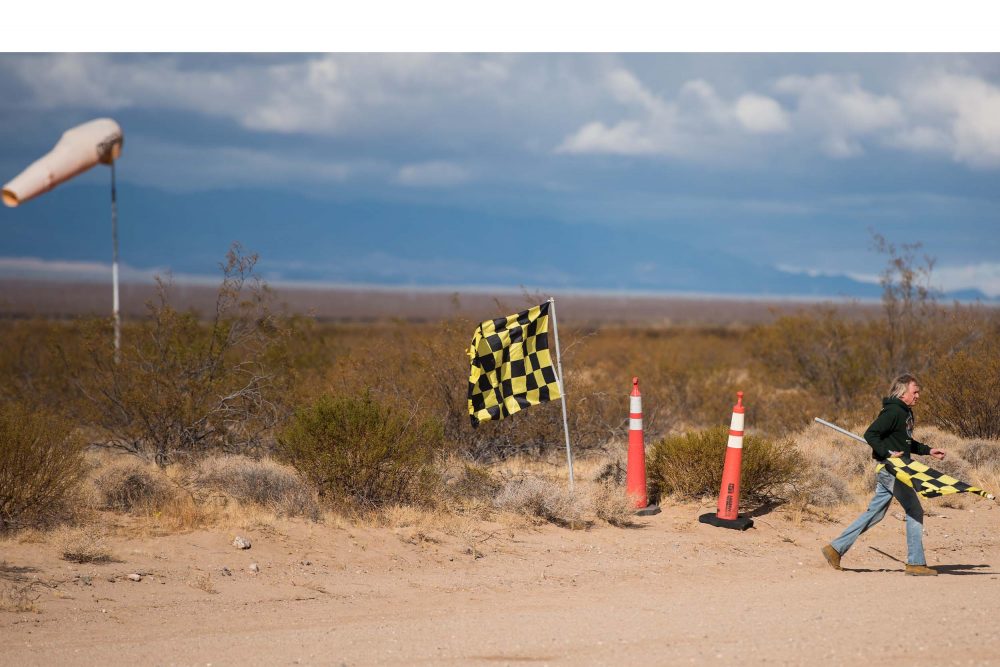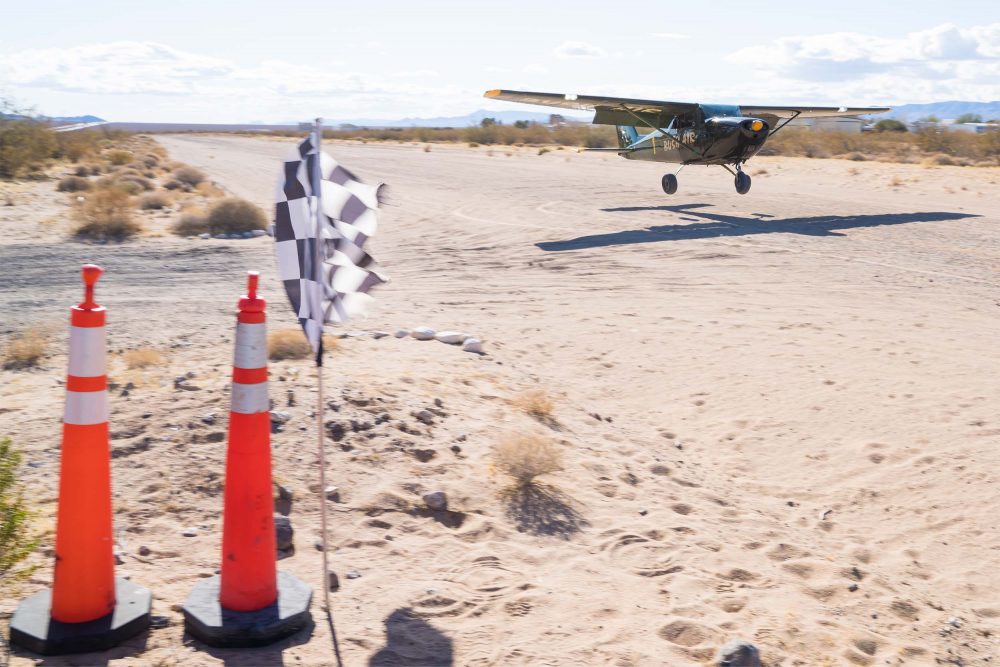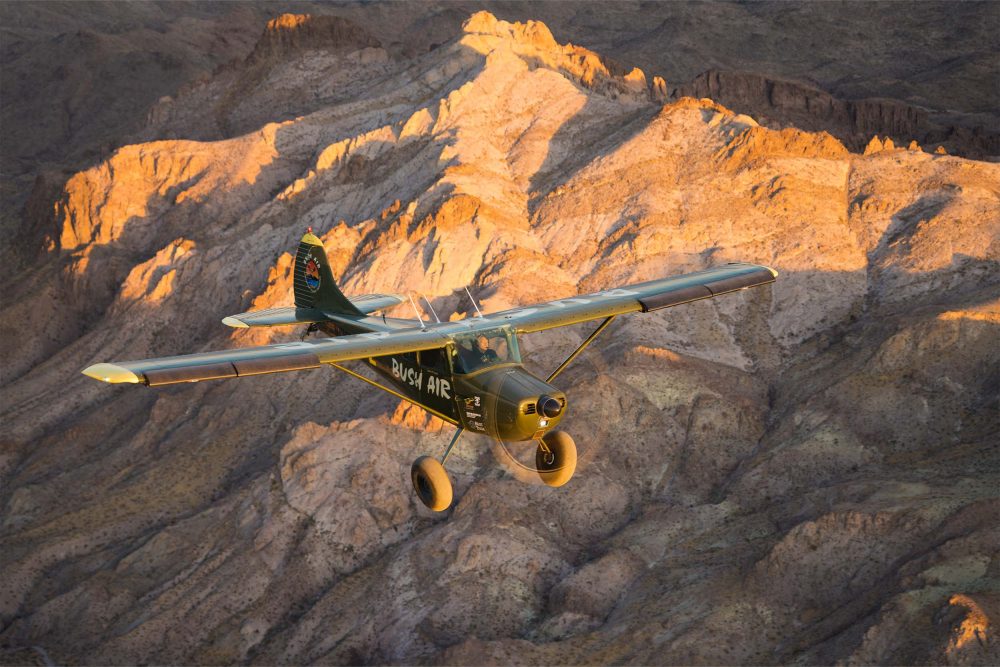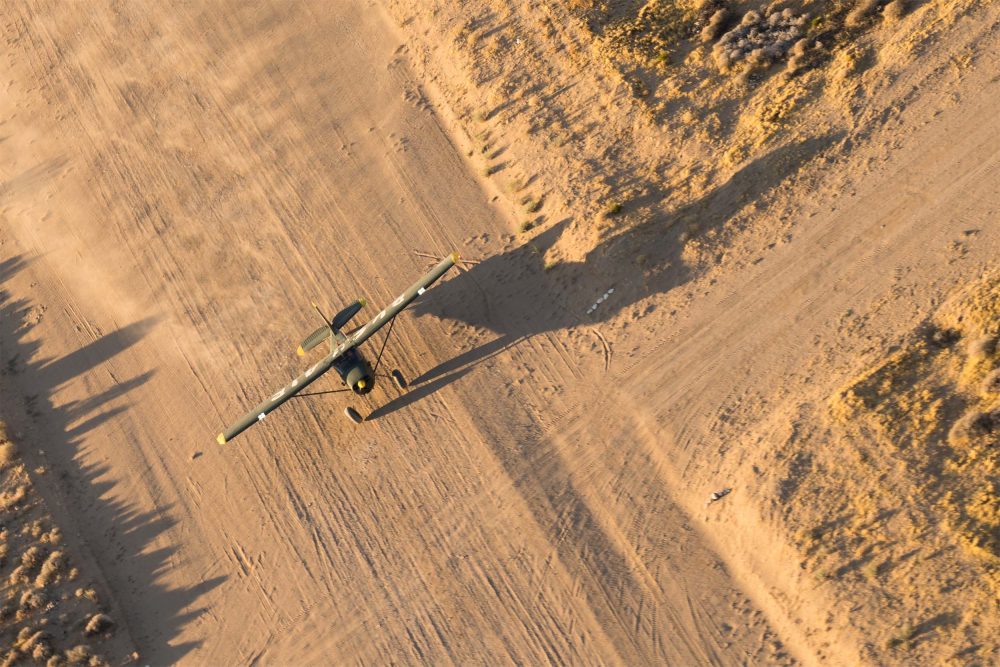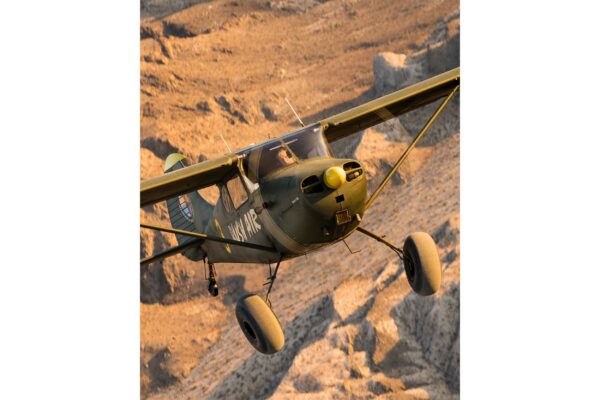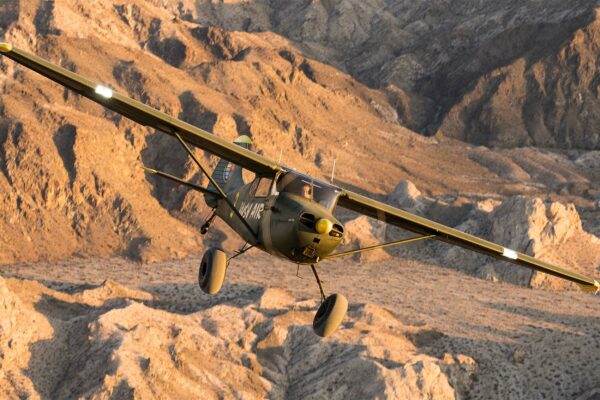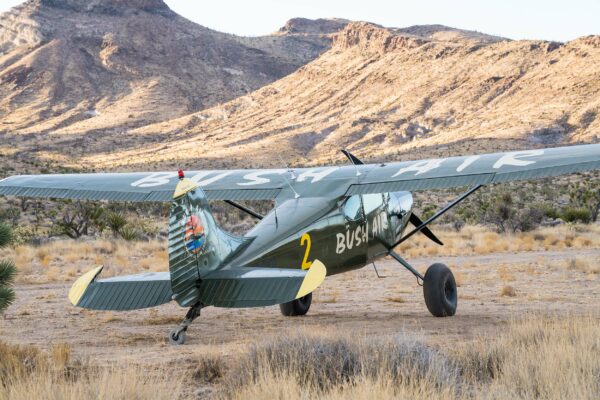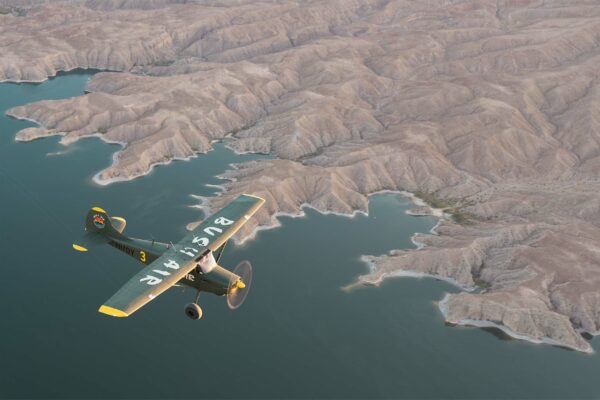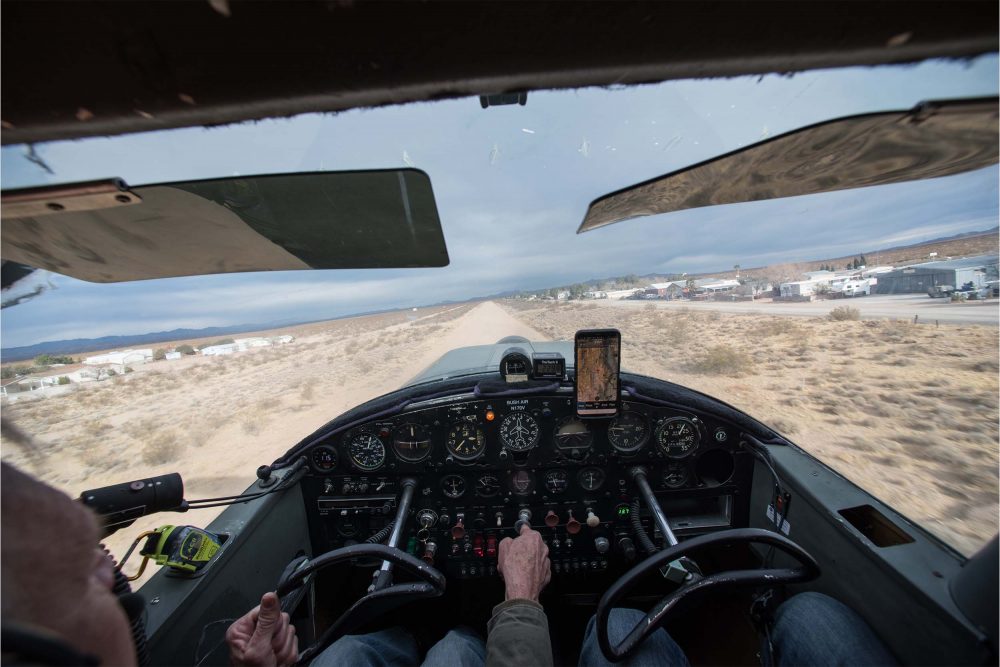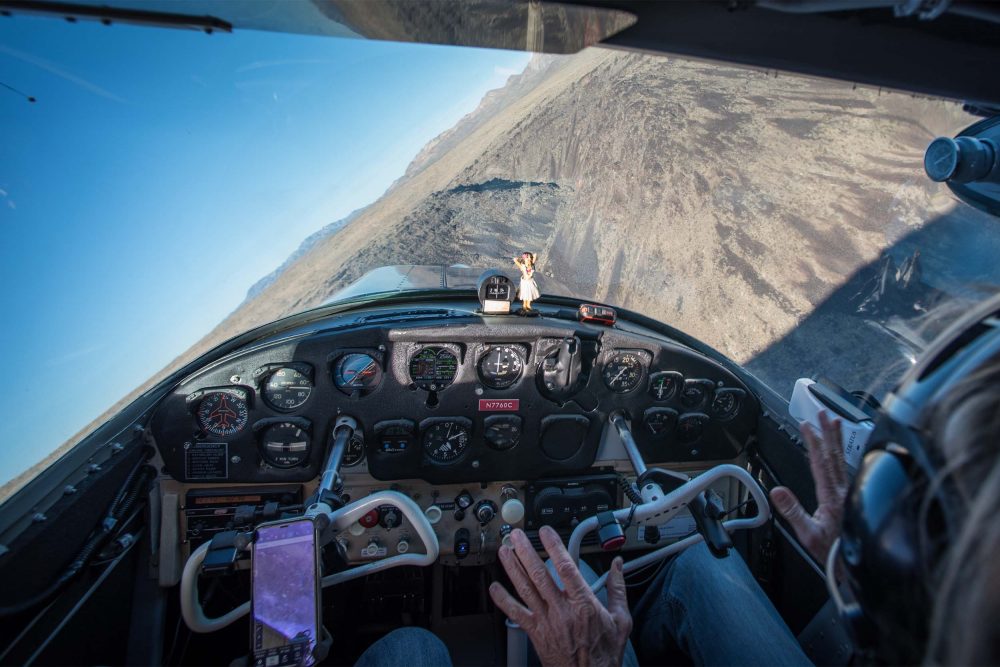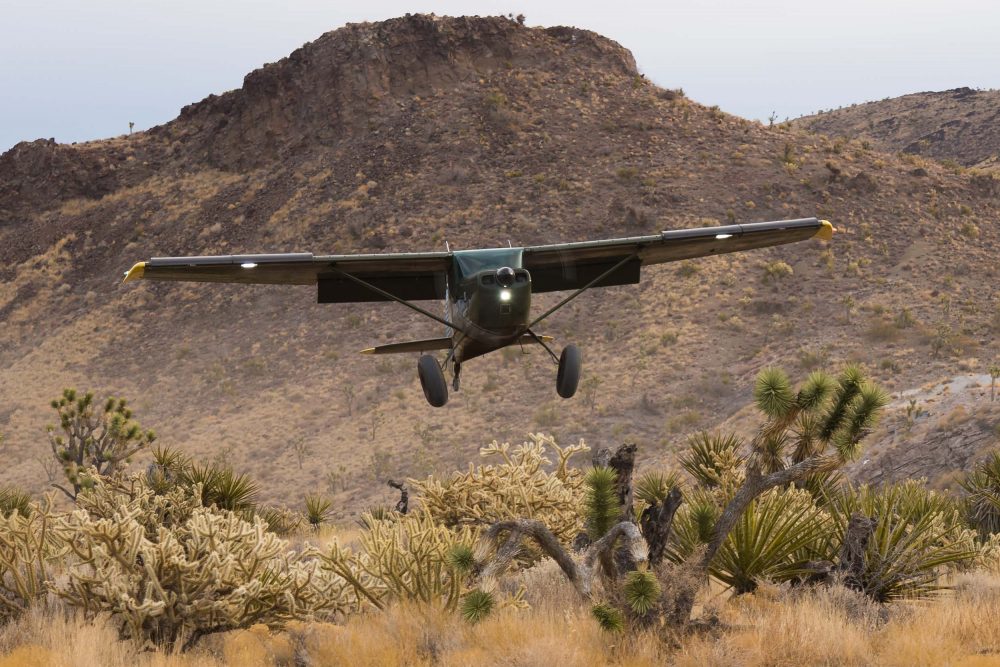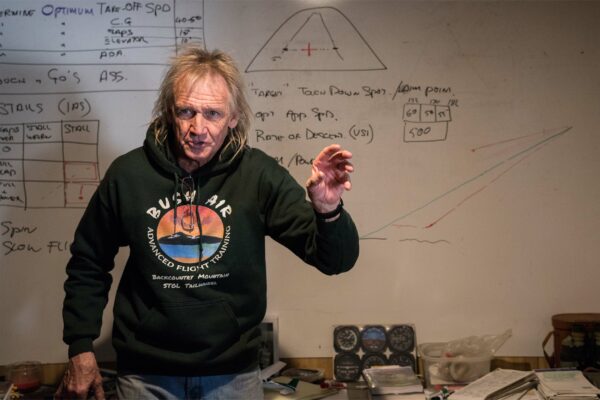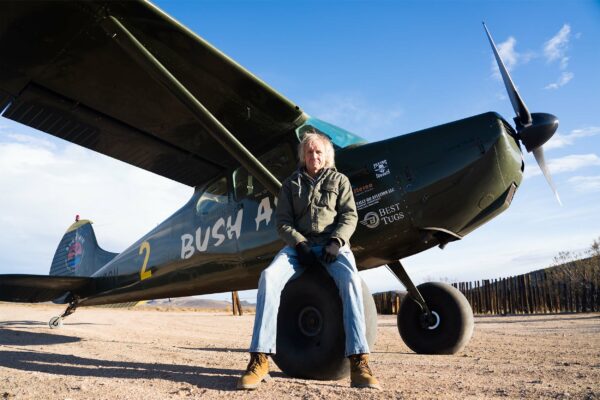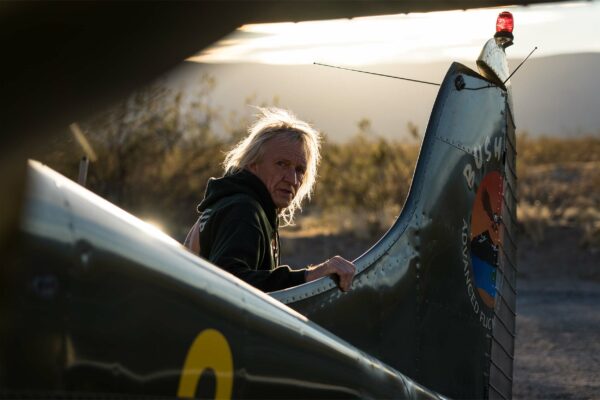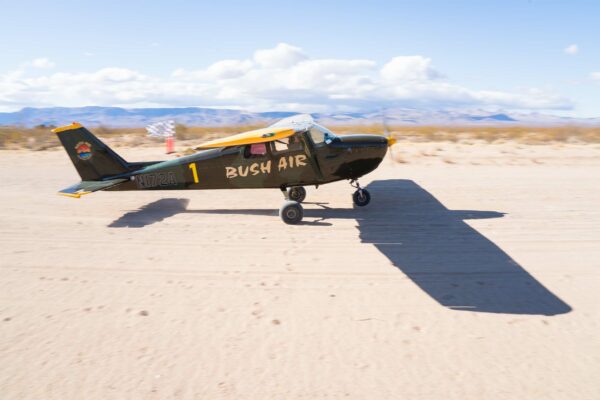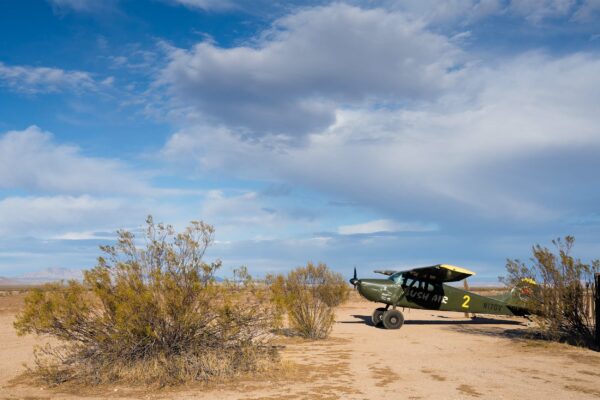Next was the landing. As before, we performed a stabilised approach. The difference this time is that we approach with the stall warning on, at the minimum safe stabilised approach speed into ground-effect, and then arriving with a high nose attitude at the line ‘hanging on the prop’. CC cuts the power and raises the flaps simultaneously in one continuous movement followed by full braking while holding back the elevator! Just like that, we were stopped – and in a distance of 120 ft! Yes, this is still a Cessna 170 with two on board, half tanks, and around 60lb of baggage.
My turn. Full power, release brakes, I am trying to feel if the aeroplane is ready to fly, and I pull the flap-actuating Johnson bar to the 40° notch. I pulled one second too early! The 170 tries to fly but mushes and settles down again. She wasn’t ready! Slight bounce, and finally, we are flying. I stayed in ground-effect and slowly retracted the flaps to the first notch / 10°, and with a safe speed, I started to climb.
On a stabilised final, the wind was gusty, and I was making constant minor adjustments to my power, controlling the rate of descent. My ‘rifle sight’ locked on the orange cones and the line between them across the runway. I am almost over the line a couple of feet above the runway, as CC yells, “Cut the power!” We were already in ground-effect. In one move, I flare, pull the power, flaps up, and touchdown precisely on the line! “Brake, brake, this is a short field,” shouts CC. The 170 shakes, veers slightly to the right, and I can feel the tail lift a foot or two, then it settles. Suddenly we are fully stopped! “Bulls eye,” screams a happy CC. I feel delighted and proud looking back to the line which is only 140ft behind us.


